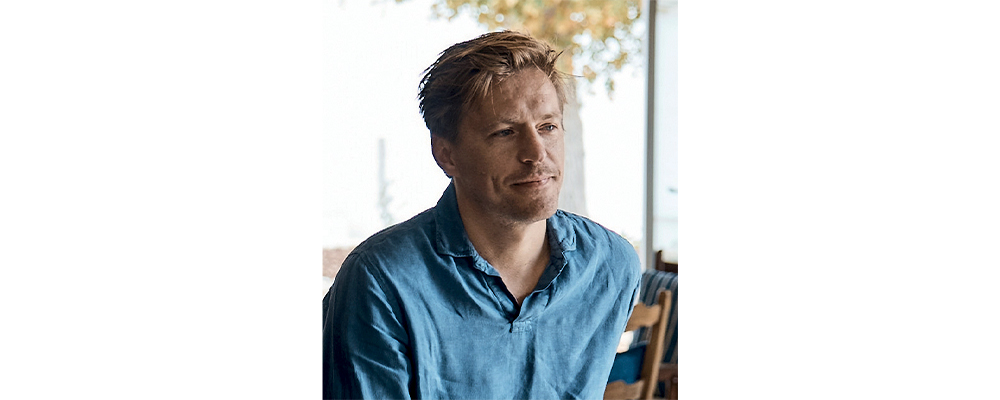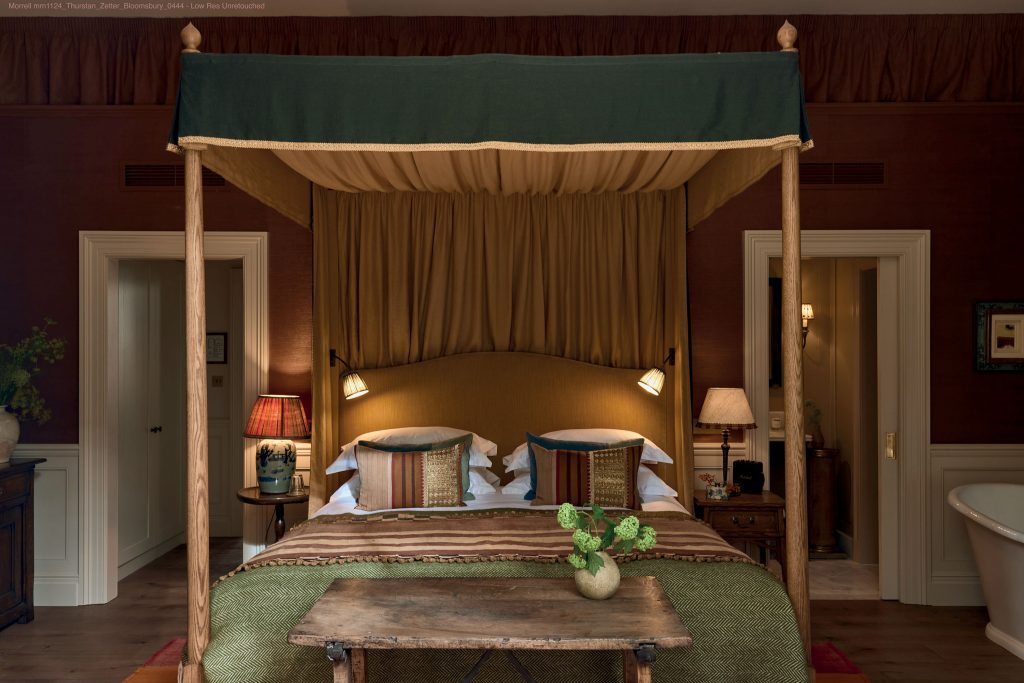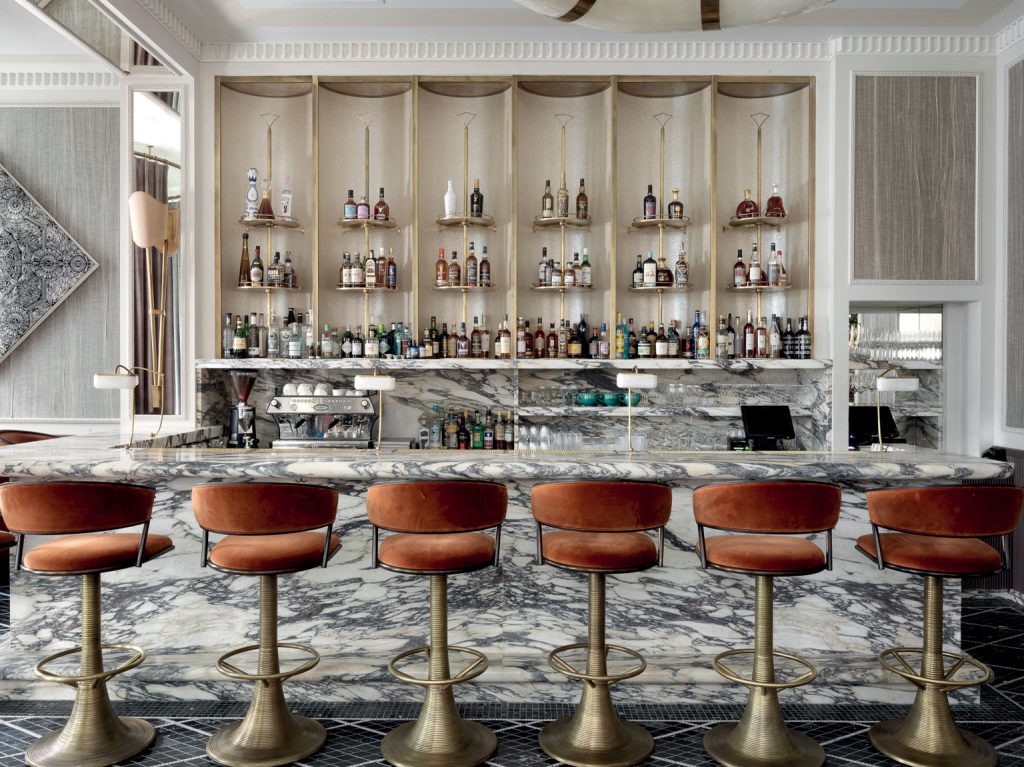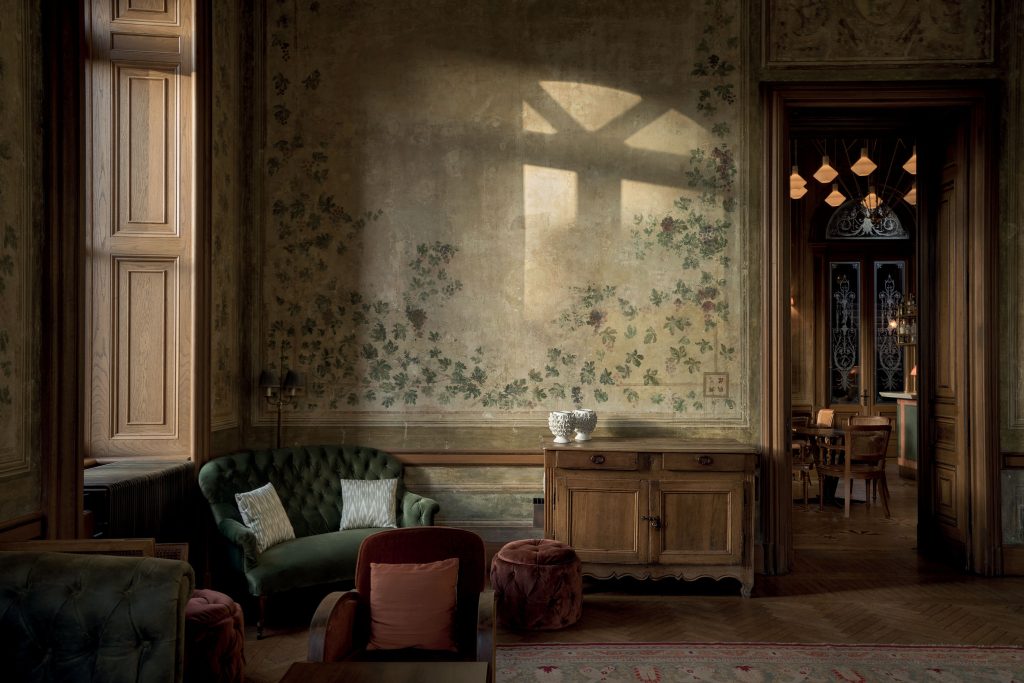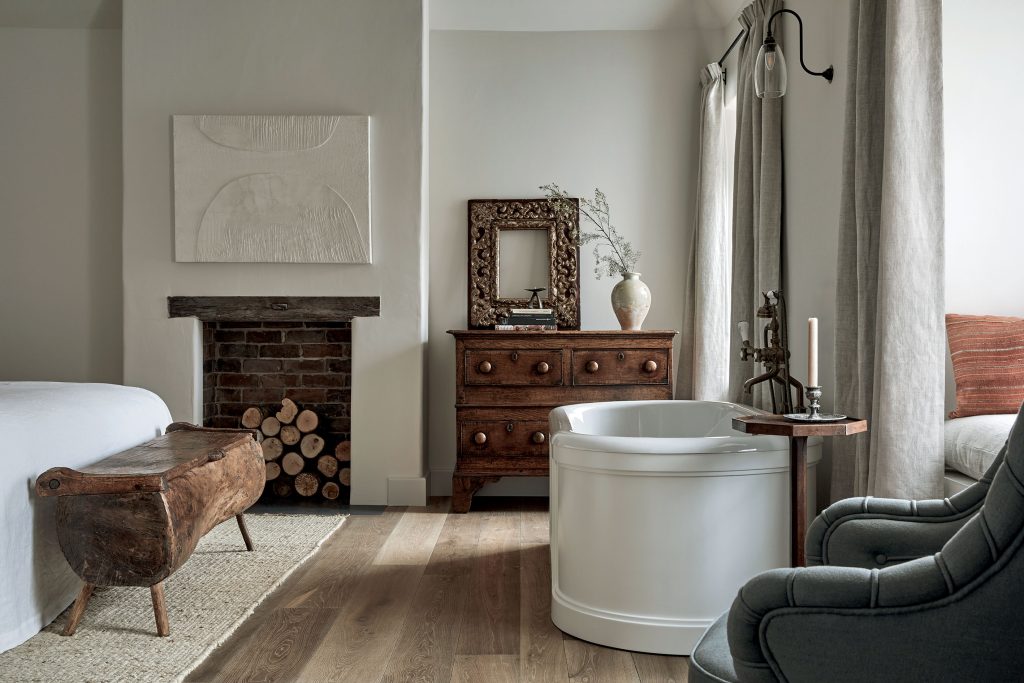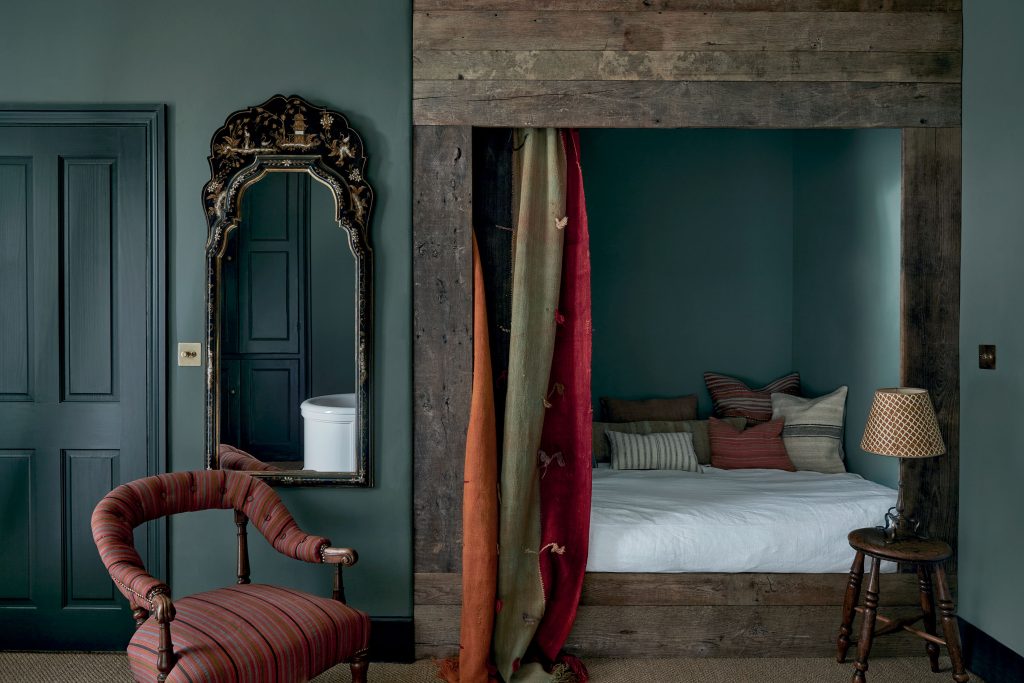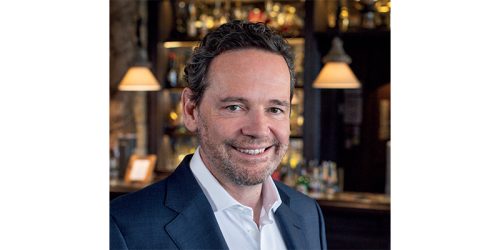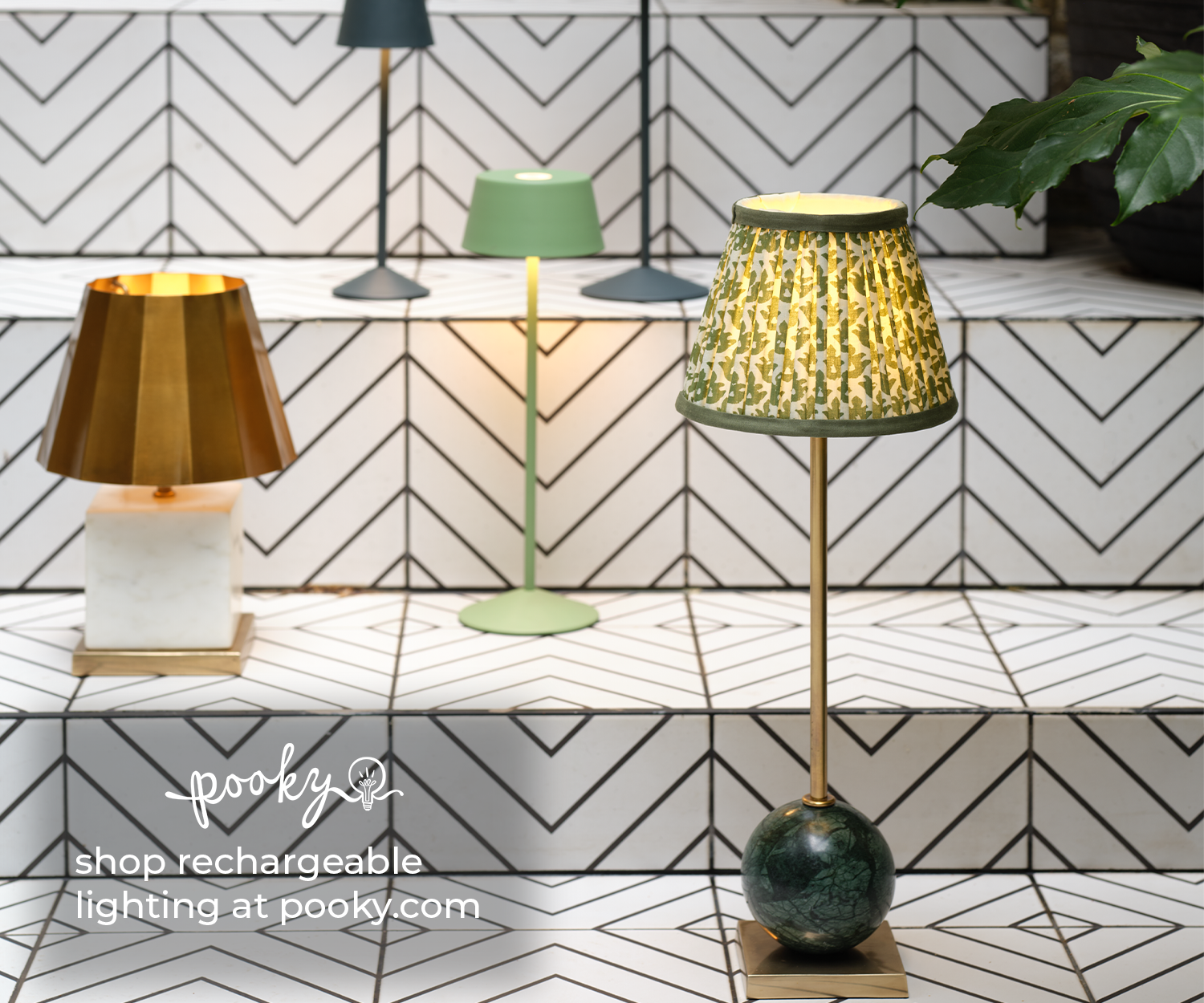James Thurstan Waterworth, Founder, Thurstan
Hidden inside a former monastery, James Thurstan Waterworth’s studio is a fitting reflection of his work – layered, storied, and full of character.
Tucked away in the medieval enclave of a former Carthusian monastery in Clerkenwell’s Charterhouse Square is Thurstan – James Thurstan Waterworth’s eponymous design studio.
 Reached through quadrangles, courtyards, walkways and gardens, it’s an extraordinary location. Even with clear directions and a site map, getting lost is almost inevitable. It’s hard to stay focused as you slip between centuries in this bucolic pocket of central London.
Reached through quadrangles, courtyards, walkways and gardens, it’s an extraordinary location. Even with clear directions and a site map, getting lost is almost inevitable. It’s hard to stay focused as you slip between centuries in this bucolic pocket of central London.
Arriving at the studio, I ring the bell – which fails to ring – before pushing open double doors into an entrance hall. Looking up from a box of samples, a visibly surprised James greets me. “Sorry, I wasn’t expecting you till later… though I’m not sure why,” he adds. Springing up, he sweeps a pile of fabrics off a chair and invites me to join him at a large farmhouse table beneath an industrial-strength mid-century chandelier.
Behind him, fabrics, books, files and samples spill from a wall of shelving. Mood boards, visuals, and slabs of wood and marble – both real and faux – line up against walls, perch on plan chests and lean casually against skirting boards. The temptation to leaf through is strong, but I resist and take my seat instead.
As he wraps up a meeting with a colleague, I worry that I’ve forced him to rush and offer to wait until he’s ready. “No, no – I’m ready,” he insists. “ I like to keep my team meetings brief and focused,”
Reassuring me this doesn’t apply to interviews and client meetings, he adds a little more context to his previous comment. “I don’t think my brain necessarily works in the way others’ appear to. I think, because I’m dyslexic, my comprehension of most things is achieved pictorially – which, as a designer, works well. I knew pretty early on that university would have been a waste of time, so I did a six-month course at KLC in London. I loved antiques and interior design – and while no one can teach taste, I gained some good practical skills and an introduction to Martin Brudnizki, who gave me my first job,” he says.
Within three years of joining Martin Brudnizki Design Studio (MBDS) as a junior, he was overseeing the launch of the New York office and soon after, Soho Beach House Miami. “Suddenly, I was sitting at the table with Nick Jones and the team. I was only 25, but the studio had worked extensively with Richard Caring through Annabel’s and Scott’s, so that was the connection – and how I began working with Nick.”
That’s quite an impressive story for a designer’s first few years in the industry. “Well, to be honest, I tried to leave MBDS after a year. I was so insecure, I felt completely out of my depth. I remember thinking, ‘Just because I like design, doesn’t mean I can do it.’ But they insisted I stayed, so I did.”
In 2014, Nick Jones decided to bring all Soho House design work in-house and asked James to set up the team. “He wanted everything – from branding to architecture – done internally. It was a lot of work and a lot of fun, and I stayed for about five years.”
As European Design Director, he led projects in Istanbul, Miami, London and Barcelona, before deciding it was time to move on. “It had been about a decade since I’d worked on the Beach House, and the day I handed over the keys to Soho Barcelona was my last,” he says. “And now we’ve come full circle, because we’re working on Nick Jones’ new baby.” He smiles. “I can’t say too much, but it should open at the end of the year.”
Thurstan was launched in 2018. “We’re not large – I try to keep the team at about 19 or 20 as I like to be involved in all the projects. There’s only so much information my brain can hold, but it needs to be constantly active. I’m told I have a very good memory when it comes to the finite details within those projects. I don’t make notes – there’s no point,” he shrugs, “It’s all pictorial.”
Like the studio’s location, much of Thurstan’s work carries an unmistakable sense of history. In collaboration with decorative artists, he creates walls washed with faded murals that seem the result of a gentle restoration rather than a fresh commission. Hand-painted faux marbles, richly grained woods, layered textures and natural materials lend depth and warmth. Antique and modern bespoke pieces sit comfortably side by side, their forms in quiet conversation. Original paintings and reproductions, set in decorative frames, are difficult to tell apart, such is the calibre of the artists he works with.
With a ready supply of ‘originals’ tucked away in a 3,500-square-foot warehouse in Buckinghamshire, it’s fair to say antiques are woven into the fabric of the studio. “Well yes,” he smiles. “It does feed into the designs, and to be honest, going to antique auctions and certain fairs is my real fix,” he admits. “My stepmother is an antiques dealer with an incredible eye – everything she finds is beautiful. There’s a lot of English, and occasionally Spanish and Italian pieces, and I grew up surrounded by them. I developed a good understanding naturally; I didn’t have any formal training and started to collect when I was quite young. Working for designers like Martin Brudnizki – where pre-20th-century pieces were less a part of the vernacular – meant it was something I built up on my own.”
Little more than a mile away, in the shadow of the British Museum, Thurstan’s latest project, the Zetter Bloomsbury, is in the final throes of preparation for its autumn opening. “It’s going to be amazing!” James says. “The amount of variance throughout is pretty unheard of for a 68-bedroom property.” Reaching over to a handful of small fabric lampshades – a lively mix of sizes, colours and textures – he explains their origins. “These are all handmade from antique fabrics I had in my collection. This is a saree from India, these are made from a 19th-century mosquito net I found in Japan, and this detail came from an old Turkish robe.” I could have listened all day as he traced each piece’s history. “There’ll be at least 800 of them – and they’ll all be sitting on antique lamps, on antique tables. The rest of the fabrics will cover chairs and stools or be made into cushions. But, obviously, it’s a commercial project, so it can’t all be antique, which then becomes about finding the right balance.”
The use of textiles and antiques, the collaborations with numerous decorative artists, and the design and commissioning of bespoke furniture are why Thurstan’s projects each have their own clear identity – a definite handwriting and a refreshing lack of repetition.
“When the budget is there and, as the designer, I have full control over the buying process, the product is almost always way, way better. Of course, that’s not always possible – budgets can be tight, and sometimes we have to pare things back. The only exception is working with someone like Nick Jones. He’s an absolute genius. Even though you don’t have complete control and there’s a lot of back and forth, you don’t mind, because you know the end result will be incredible. Every project has a thousand fires to put out, and value engineering inevitably means the design budgets are cut. When all the antiques, the fabrics, the bespoke furniture are lost, you lose the nuances of the project. Everyone talks about wanting a hotel to feel like a home, but without the level of detail we put in, it’s impossible. If you procure everything in advance and don’t allow purchasing throughout the latter part of the process, then it makes it hard to get away from it feeling like a hotel.”
Aware we have by now completely overrun the usual length of his meetings, I quickly ask James about his other projects. “There’s are lots of great things going on,” he grins, before reeling off a list that confirms his desire for variance. “We’re doing a Puglian farmhouse, all stripped back and very clean. We’re working on the Duke of Somerset’s family home, which is very traditional English. Then there’s Nick Jones’ project, a 20th-century-inspired modern version of The Savoy. We’re also in the early stages of a hospitality project in Tuscany – a new build, where we’re leaning into a ’70s Gio Ponti furniture style, and the list goes on. Honestly, there’s so much more. But the point is, they are all going to be very different. I know as designers, we all like to say we treat every project differently, but it’s an absolute must for us”.
And on that note, I leave James to get back to creating his next project. Walking away from his studio, it’s hard not to notice the parallels between place and practice: both steeped in history, both elusive, both alive with possibility. Like the monastery that conceals it, James’ work is a world best uncovered slowly, detail by detail.



